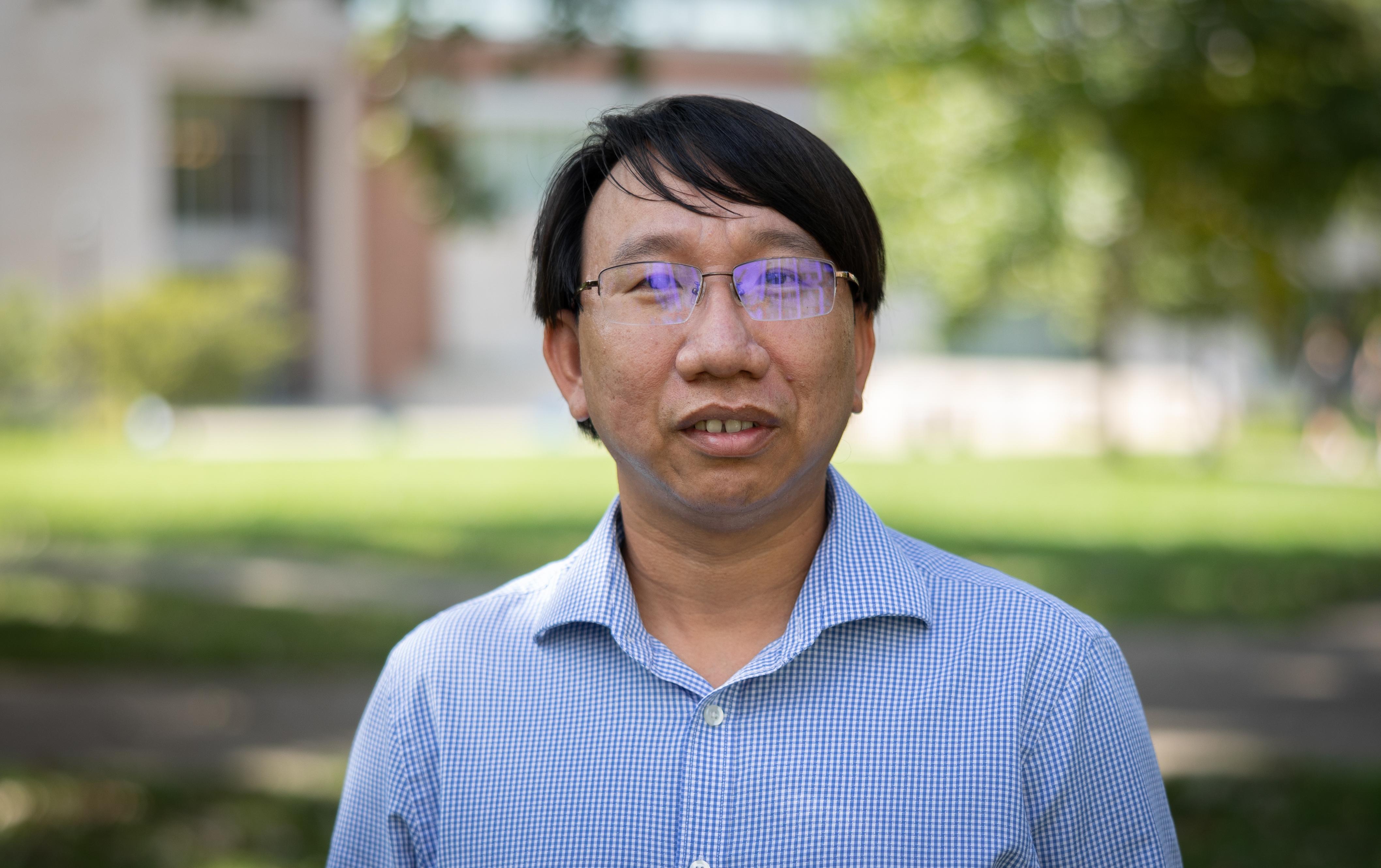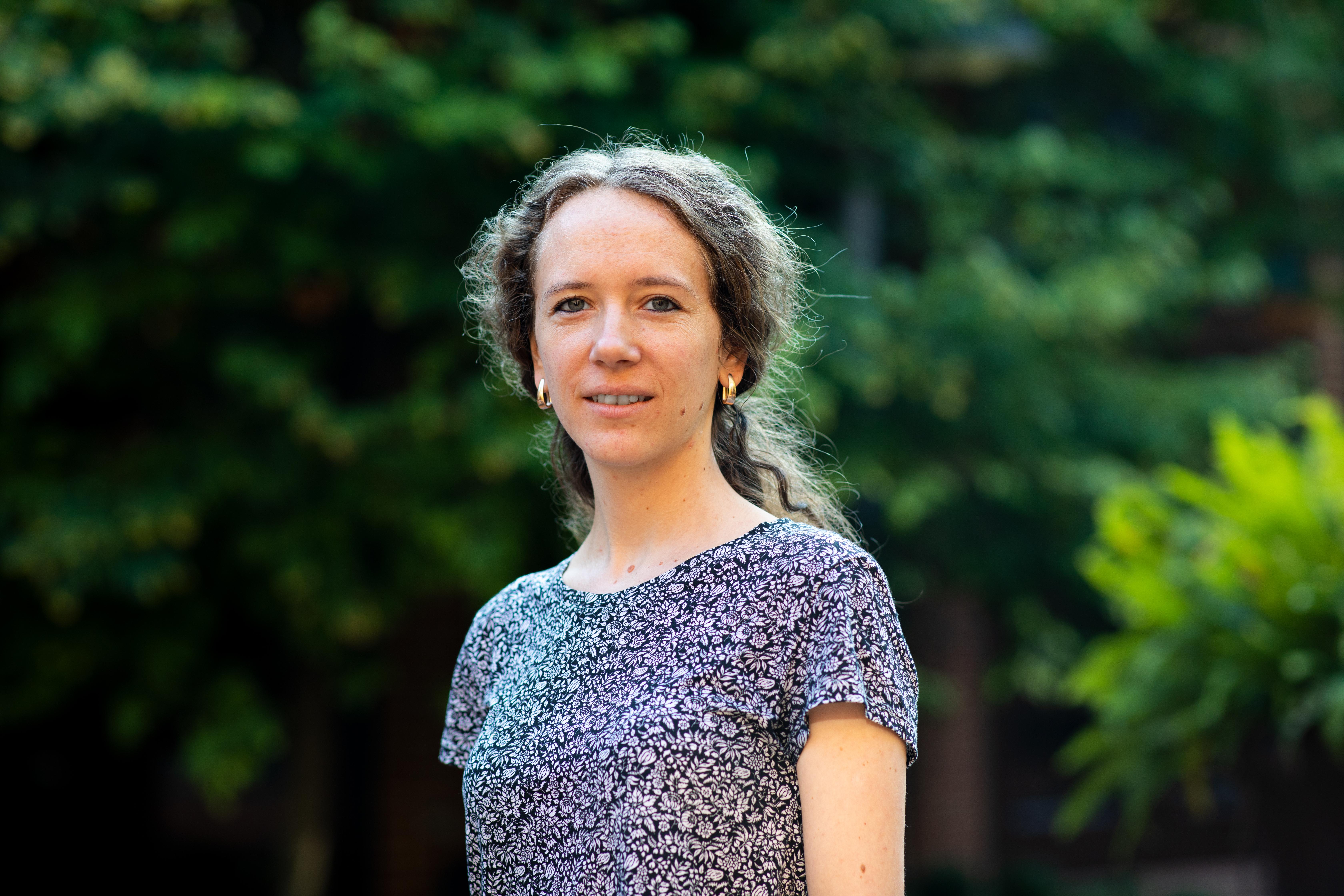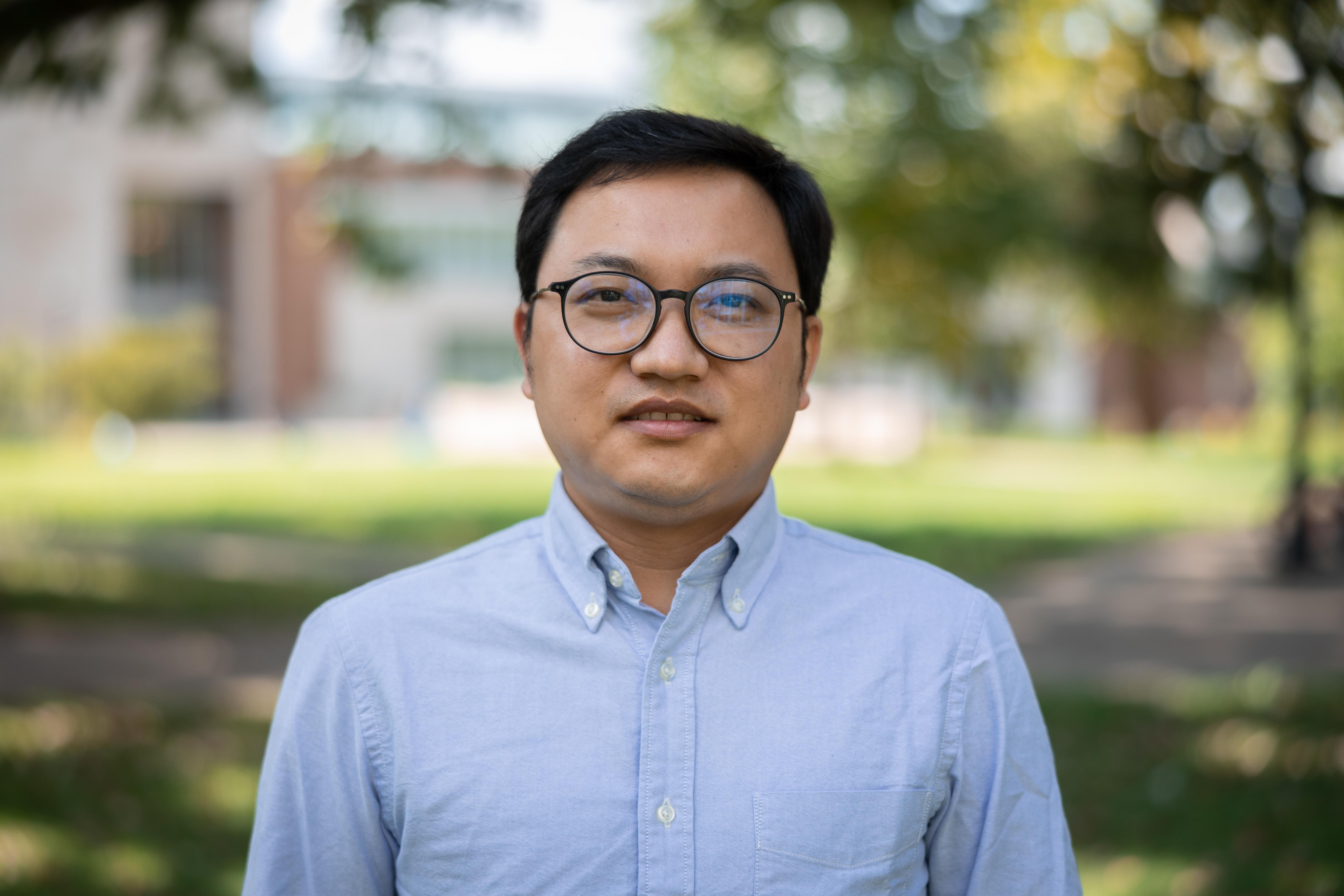By Richard LeComte
LEXINGTON, Ky. – Three assistant professors in the University of Kentucky’s Mathematics Department in the College of Arts & Sciences have received National Science Foundation grants, demonstrating how the College’s junior faculty are pursuing research and outside funding. The professors are Khrystyna Serhiyenko, Duc Nguyen and Ding Lu.
“Congratulations to Khrystyna Serhiyenko, Duc Nguyen and Ding Lu on these wonderful achievements,” said Uwe Nagel, chair of the Mathematics Department. “Every institution of higher education has a department of mathematics. As a consequence, competition for external funding is very, very intense. These NSF awards are a wonderful recognition of the innovative ideas of and the research conducted by these colleagues. They also help solidify our standing as a strong Mathematics department nationally and internationally.”
 Duc Nguyen’s research has focused on developing advanced and novel mathematical methods and models for understanding molecular bioscience and biophysics. He received a three-year, $150,000 NSF grant for his project “Collaborative Research: Integrating Algebraic Topology, Graph Theory and Multiscale Analysis for Learning Complex and Diverse Datasets.” The purpose of the project is to build novel topology and manifold-learning-based approaches to revolutionize the current practice in data analysis to deal with the challenge of structurally complex data and diverse data.
Duc Nguyen’s research has focused on developing advanced and novel mathematical methods and models for understanding molecular bioscience and biophysics. He received a three-year, $150,000 NSF grant for his project “Collaborative Research: Integrating Algebraic Topology, Graph Theory and Multiscale Analysis for Learning Complex and Diverse Datasets.” The purpose of the project is to build novel topology and manifold-learning-based approaches to revolutionize the current practice in data analysis to deal with the challenge of structurally complex data and diverse data.
“In this project, my team proposes to develop multiscale persistent combinatorial graph theory to effectively represent the diverse data originated from sparse data points in a huge space via topological data analysis and spectral data analysis,” he said. “These methods will be carefully integrated with advanced machine learning and deep learning algorithms for complex and diverse datasets.”
Nguyen will apply the proposed methods to a wide range of case studies in data science. He will develop user-friendly software packages and online services equipped with parallel and GPU architectures for researchers who are not formally trained in mathematics or machine learning.
 Khrystyna Serhiyenko’s $193,218 NSF grant project is titled “Cluster algebras and categorification.” The grant will support research in pure mathematics, in particular topics that lie at the intersection of combinatorics -- problems concerned with counting and studying finite or discrete structures -- and representation theory -- and representation theory. The grant will provide summer support and travel funding for the primary investigator and graduate students as well as bring visitors to the department who will give talks about recent developments in the field.
Khrystyna Serhiyenko’s $193,218 NSF grant project is titled “Cluster algebras and categorification.” The grant will support research in pure mathematics, in particular topics that lie at the intersection of combinatorics -- problems concerned with counting and studying finite or discrete structures -- and representation theory -- and representation theory. The grant will provide summer support and travel funding for the primary investigator and graduate students as well as bring visitors to the department who will give talks about recent developments in the field.
“The main objects of study are cluster algebras, which are a class of commutative rings, or simply rational functions, with a beautiful combinatorial structure,” she said. “There are numerous connections among these algebras and other areas of mathematics and theoretical physics. This is a highly active research area, and the goal of this project is to develop new combinatorial models for certain important classes of cluster algebras to get an explicit description of its generators and relations that are otherwise built recursively.”
 Ding Lu’s research topic is “Theory and Algorithms for Eigenvector-Dependent Nonlinear Eigenvalue Problems.” As principal investigator, he received $324,815 for a three-year award. process.
Ding Lu’s research topic is “Theory and Algorithms for Eigenvector-Dependent Nonlinear Eigenvalue Problems.” As principal investigator, he received $324,815 for a three-year award. process.
“For the NSF grant, the mathematical problem we consider is known as the Eigenvector-dependent Nonlinear Eigenvalue Problems, abbreviated as NEPv,” he said. “They are fundamental problems in computational science and engineering and commonly arise in electronic structure calculations in computational materials science, signal processing of brain–computer interfaces in neuroscience and biomedical engineering, among other applications. NEPv are difficult problems; they come in a variety of forms and pose intriguing challenges for mathematical analysis and numerical solutions.
“Our key observation is that NEPv from real-life applications usually share a special `structure,' which we call the affine-linear structure. This provides people a completely new way to look at NEPv, and allows for the development of new theory and algorithms for the problem.”
Research reported in this publication was supported by the National Science Foundation under Award Numbers 2110731, 2053284 and 2054255. The opinions, findings, and conclusions or recommendations expressed are those of the author(s) and do not necessarily reflect the views of the National Science Foundation.
